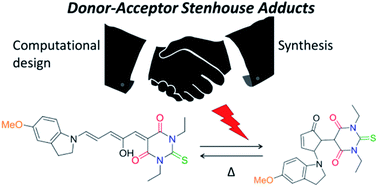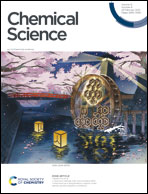Redesigning donor–acceptor Stenhouse adduct photoswitches through a joint experimental and computational study†
Abstract
Many studies have recently explored a new class of reversible photoswitching compounds named Donor–Acceptor Stenhouse Adducts (DASAs). Upon light irradiation, these systems evolve from a coloured open-chain to a colourless closed-ring form, while the thermal back-reaction occurs at room temperature. In order to fulfill the requirements for different applications, new molecules with specific properties need to be designed. For instance, shifting the activation wavelength towards the red part of the visible spectrum is of relevance to biological applications. By using accurate computational calculations, we have designed new DASAs and predicted some of their photophysical properties. Starting from well-studied donor and acceptor parts, we have shown that small chemical modifications can lead to substantial changes in both photophysical and photoswitching properties of the resulting DASAs. Furthermore, we have also analysed how these substitutions impact the electronic structure of the systems. Finally, some pertinent candidates have been successfully synthesized and their photoswitching properties have been characterized experimentally.



 Please wait while we load your content...
Please wait while we load your content...